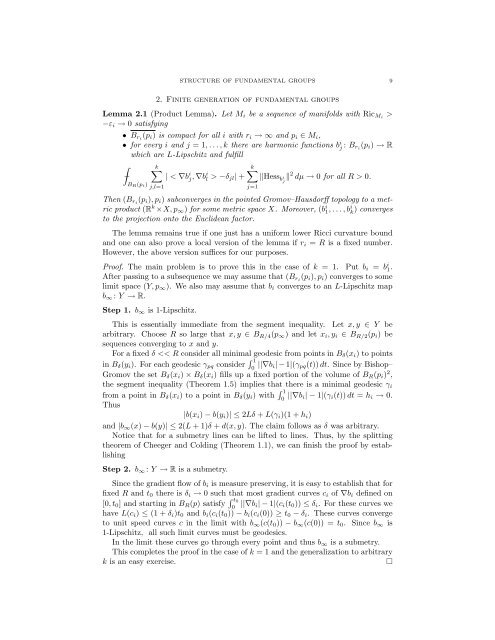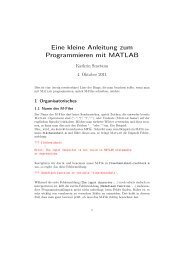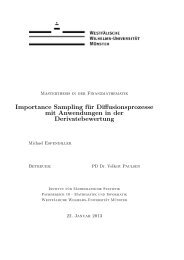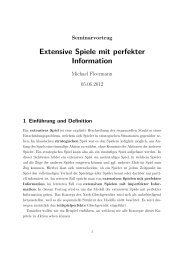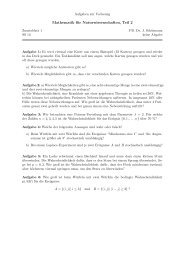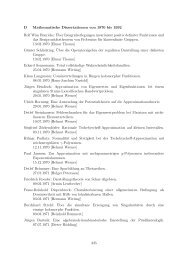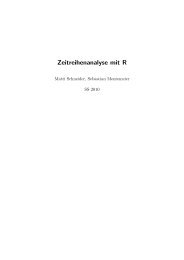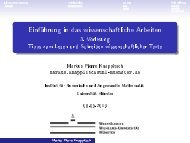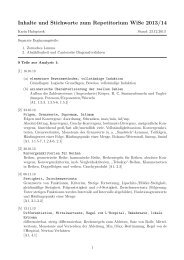Margulis Lemma
Margulis Lemma
Margulis Lemma
You also want an ePaper? Increase the reach of your titles
YUMPU automatically turns print PDFs into web optimized ePapers that Google loves.
STRUCTURE OF FUNDAMENTAL GROUPS 9<br />
2. Finite generation of fundamental groups<br />
<strong>Lemma</strong> 2.1 (Product <strong>Lemma</strong>). Let M i be a sequence of manifolds with Ric Mi ><br />
−ε i → 0 satisfying<br />
• B ri (p i ) is compact for all i with r i → ∞ and p i ∈ M i ,<br />
• for every i and j = 1, . . . , k there are harmonic functions b i j : B r i<br />
(p i ) → R<br />
which are L-Lipschitz and fulfill<br />
∫ k∑<br />
k∑<br />
− | < ∇b i j, ∇b i l > −δ jl | + ‖Hess b i<br />
j<br />
‖ 2 dµ → 0 for all R > 0.<br />
B R (p i)<br />
j,l=1<br />
j=1<br />
Then (B ri (p i ), p i ) subconverges in the pointed Gromov–Hausdorff topology to a metric<br />
product (R k ×X, p ∞ ) for some metric space X. Moreover, (b i 1, . . . , b i k ) converges<br />
to the projection onto the Euclidean factor.<br />
The lemma remains true if one just has a uniform lower Ricci curvature bound<br />
and one can also prove a local version of the lemma if r i = R is a fixed number.<br />
However, the above version suffices for our purposes.<br />
Proof. The main problem is to prove this in the case of k = 1. Put b i = b i 1.<br />
After passing to a subsequence we may assume that (B ri (p i ), p i ) converges to some<br />
limit space (Y, p ∞ ). We also may assume that b i converges to an L-Lipschitz map<br />
b ∞ : Y → R.<br />
Step 1. b ∞ is 1-Lipschitz.<br />
This is essentially immediate from the segment inequality. Let x, y ∈ Y be<br />
arbitrary. Choose R so large that x, y ∈ B R/4 (p ∞ ) and let x i , y i ∈ B R/2 (p i ) be<br />
sequences converging to x and y.<br />
For a fixed δ


